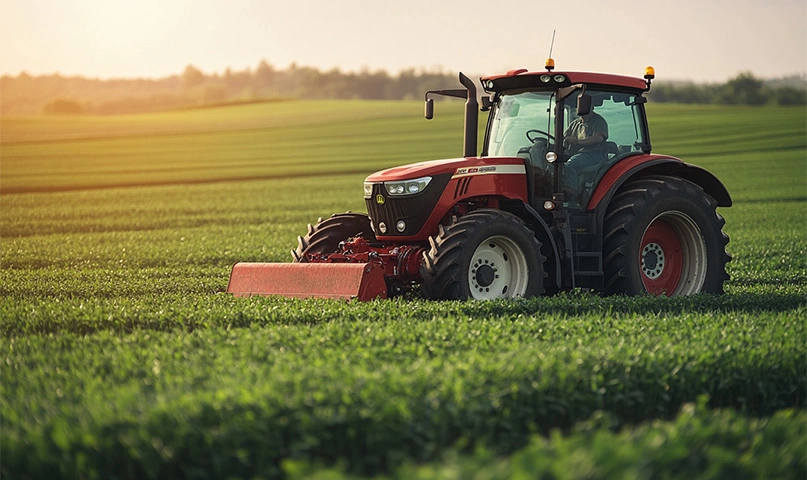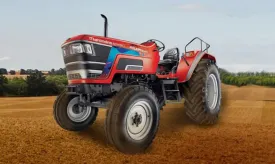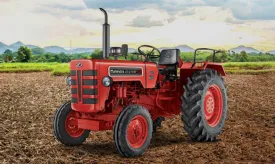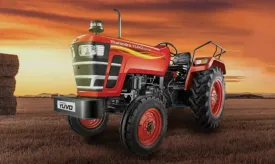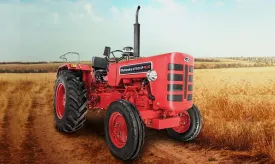Cultivator vs Rotavators: Key Difference & How to Choose the Right Tool
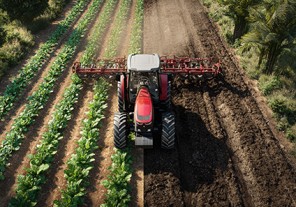
Difference between a cultivator and a rotavator
A cultivator and a rotavator are both agricultural implements used for soil preparation, but they serve different purposes and operate in distinct ways. A cultivator is primarily used for shallow tilling, weeding, and aerating the soil. It works by using tines, discs, or blades to break up compacted soil, control weeds, and mix in organic matter. Cultivators are typically used for maintaining soil structure and preparing seedbeds in less dense soils. They are lighter, simpler, and more commonly used for tasks like weed control between rows of crops.
In contrast, a rotavator (or rotary tiller) is designed for deeper tillage. It uses rotating blades or tines to chop and turn the soil at a greater depth, effectively breaking up compacted soil and turning it over. This makes it ideal for preparing land before planting, especially in hard or compacted soil. Rotavators are more powerful and can be used for larger-scale farming operations. They are more versatile than cultivators, as they can handle tougher soil conditions and mix soil more thoroughly.
Here's a detailed comparison:
1. Functionality:
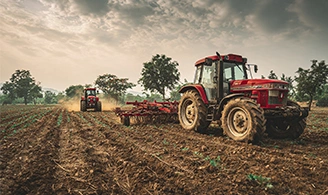
- Cultivator: Primarily used for shallow tilling, weed control, and aeration of the soil. It breaks up the top layer of the soil to improve soil structure and prevent weed growth. It is used in maintaining soil health and preparing seedbeds.
- Rotavator: A rotary tiller that performs deeper soil tilling, breaking up compacted soil, turning over the soil, and mixing in organic matter. It’s often used for primary tillage and soil preparation before planting.
2. Depth of tillage:
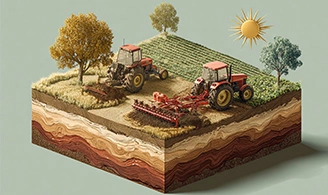
- Cultivator: Works at shallow depths, typically around 3 to 6 inches. It’s suited for light tillage tasks like loosening the soil, controlling weeds, or mixing in fertilizers.
- Rotavator: Designed for deeper tilling, usually 6 inches or more. It’s more effective at breaking through hard, compacted soil and preparing it for deeper-rooted crops.
3. Design and operation:
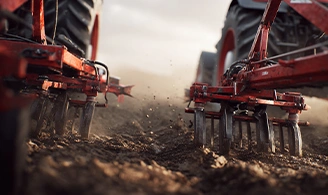
- Cultivator: Uses fixed or spring-loaded tines, blades, or discs to break the soil. The tines or blades move through the soil, but they do not rotate as aggressively as a rotavator.
- Rotavator: Equipped with rotating blades or tines that spin as they dig into the soil, breaking up clods and turning the soil over. The rotation helps it cut through compacted soil and mix organic material more thoroughly.
4. Use cases:
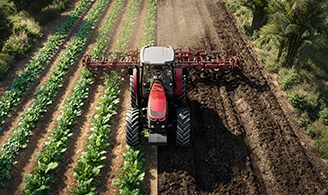
- Cultivator: Ideal for secondary tillage after plowing, weed control, and soil aeration in light to moderately compacted soils. It is also useful in row crops for maintaining soil between planted rows.
- Rotavator: Best for primary tillage, preparing soil for planting, and breaking up tough or compacted soils. It’s effective when starting work in new fields or when soil needs significant loosening.
5. Power and efficiency:
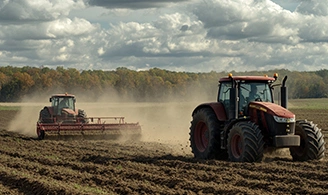
- Cultivator: Typically requires less power and is more energy-efficient, making it suitable for lighter, regular use.
- Rotavator: Requires more power and fuel due to the deep and aggressive soil breaking action. It's typically used in larger-scale farming operations for thorough soil preparation.
6. Cost and maintenance:
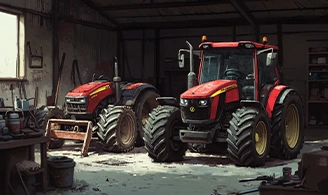
- Cultivator: Generally cheaper and simpler, with lower maintenance costs. It's a cost-effective tool for regular use in smaller to medium-sized farms.
- Rotavator: Typically, more expensive and requires more maintenance due to its more complex rotary mechanism. However, it is a more powerful tool for larger and more intensive farming operations.
Cultivator or rotavator, which one to use
Choosing between a cultivator and a rotavator depends on several factors, including soil conditions, the depth of tillage required, the crop being grown, and the scale of the farming operation. Here are some key considerations to help you decide:
1. Soil type and condition
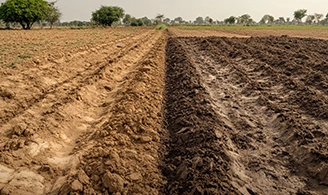
- Cultivator: Ideal for loose, soft soils or areas where only shallow tillage or weed control is needed. If your soil is already relatively loose or you’re maintaining soil structure, a cultivator is a great option.
- Rotavator: Best for hard, compacted, or clay soils that need more aggressive soil breaking. If you’re working with tough soil or need to break up compacted layers, a rotavator will be more effective due to its deeper tilling action.
2. Depth of tillage
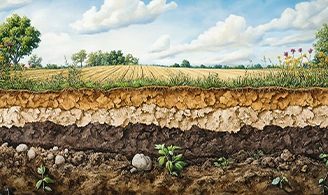
- Cultivator: Works well for shallow tillage—generally around 3 to 6 inches deep. It’s more effective for tasks like weeding or aerating the topsoil.
- Rotavator: Designed for deeper tillage (6 inches or more), making it suitable for primary tillage, breaking soil clods, and preparing the ground before planting crops.
3. Crop type and field preparation
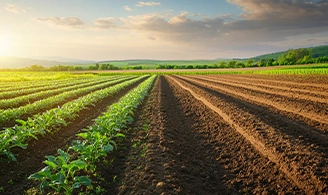
- Cultivator: Suitable for post-planting operations like maintaining soil structure between crop rows or for secondary tillage, such as breaking up soil after plowing or mixing in fertilizers.
- Rotavator: Great for pre-planting soil preparation, especially if you need to thoroughly mix and turn over the soil. It’s effective when preparing new fields or turning soil before planting deep-root crops.
4. Size of the field and farm operation
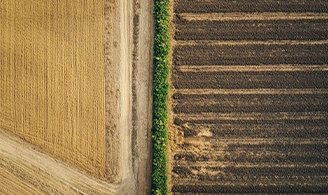
- Cultivator: Ideal for smaller to medium-sized fields where only light soil work is required. It’s also more maneuverable and efficient for row crops like vegetables or corn.
- Rotavator: More suited for larger farms or fields requiring extensive soil work. It is powerful and can handle more demanding tasks, but it may be overkill for smaller, well-maintained fields.
5. Time and labor efficiency
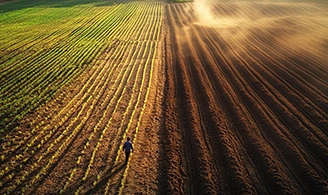
- Cultivator: Generally, cultivators are faster and less power-intensive, making them more cost-effective for maintenance work and lighter tasks. They are suitable for frequent use throughout the growing season.
- Rotavator: Requires more time and fuel due to its deeper tilling, but it provides thorough soil preparation for crops that need more intensive soil work, like root vegetables or grains.
6. Cost and maintenance
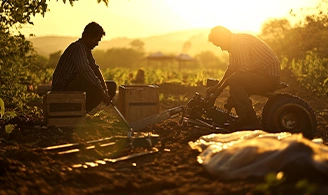
- Cultivator: Typically, cheaper and requires less maintenance than a rotavator. Its simple design makes it a cost-effective tool for lighter agricultural tasks.
- Rotavator: Tends to be more expensive and may require more frequent maintenance due to its complex design and heavy-duty parts. However, it provides higher efficiency for deep tillage tasks.
Summary:
- Use a cultivator when you need shallow tillage, weed control, or aeration in softer soil, or for maintenance in row crops.
- Use a rotavator for deeper tillage, soil breaking, and preparing compacted ground, especially in larger-scale farming operations or when preparing new fields.
By considering soil type, depth of tillage, crop requirements, and field size, you can make an informed decision about whether a cultivator or rotavator is the right tool for the job.









